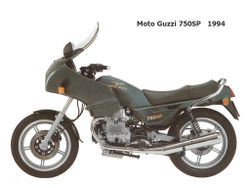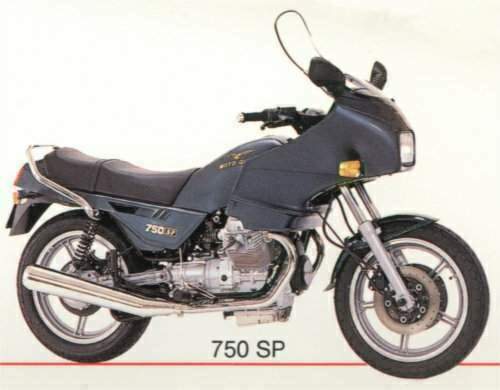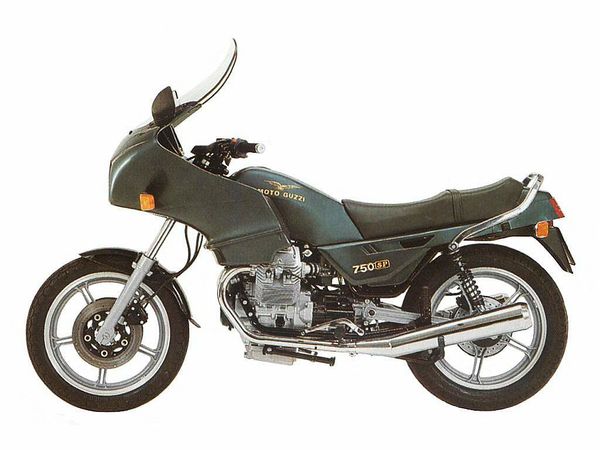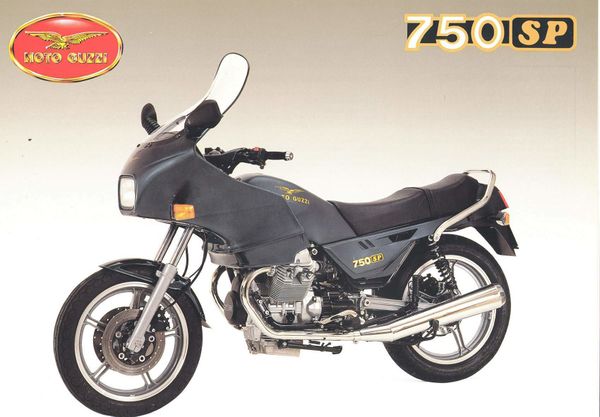Moto Guzzi 750SP
 |
|
| Moto Guzzi 750SP | |
| Manufacturer | |
|---|---|
| Production | 1989 - 1993 |
| Class | Sport touring |
| Engine | Air cooled, four stroke, transverse V-twin cylinder, OHC, 4 valves per cylinder |
| Bore / Stroke | 83.8mm x 83.8mm |
| Compression ratio | 9.7:1 |
| Horsepower | 58.07 HP (43.3 KW) @ 7300RPM |
| Torque | 45.73 ft/lbs (62.0 Nm) @ 5600RPM |
| Fuel System | Carburetors |
| Transmission | Gear box: 5-Speed Final Drive: Shaft |
| Suspension | Front: Moto Guzzi hydropneumatic telescopic forks with pressure equalizer Rear: Swinging fork, light alloy die-casting with Koni adjustable shock absorbers |
| Brakes | Front: Discs Rear: Disc |
| Front Tire | 100/90 V18 |
| Rear Tire | 120/90 V18 |
| Weight | 197.0 kg (wet) |
| Manuals | Service Manual |
The Moto Guzzi 750SP was a Air cooled, four stroke, transverse V-twin cylinder, OHC, 4 valves per cylinder Sport touring motorcycle produced by Moto Guzzi in 1989. Max torque was 45.73 ft/lbs (62.0 Nm) @ 5600 RPM. Claimed horsepower was 58.07 HP (43.3 KW) @ 7300 RPM.
Engine[edit | edit source]
A 83.8mm bore x 83.8mm stroke result in a displacement of just 744.0 cubic centimeters.
Drive[edit | edit source]
The bike has a 5-Speed transmission. Power was moderated via the Wet multi-discs.
Chassis[edit | edit source]
It came with a 100/90 V18 front tire and a 120/90 V18 rear tire. Stopping was achieved via Discs in the front and a Disc in the rear. The front suspension was a Moto Guzzi hydropneumatic telescopic forks with pressure equalizer while the rear was equipped with a Swinging fork, light alloy die-casting with Koni adjustable shock absorbers.
1989 - 1993 Moto Guzzi 750SP[edit | edit source]
The model is characterized by a state of the art and above all, practical construction, in which the rocker arm together with the rear wheel is attached to a hinge point in the gearbox. Anyon
maintenance know how amazingly useful this construction. Because really quite easily the upper frame can be detached in combination with the front wheel of the lower chassis, whereby th
known to work.


